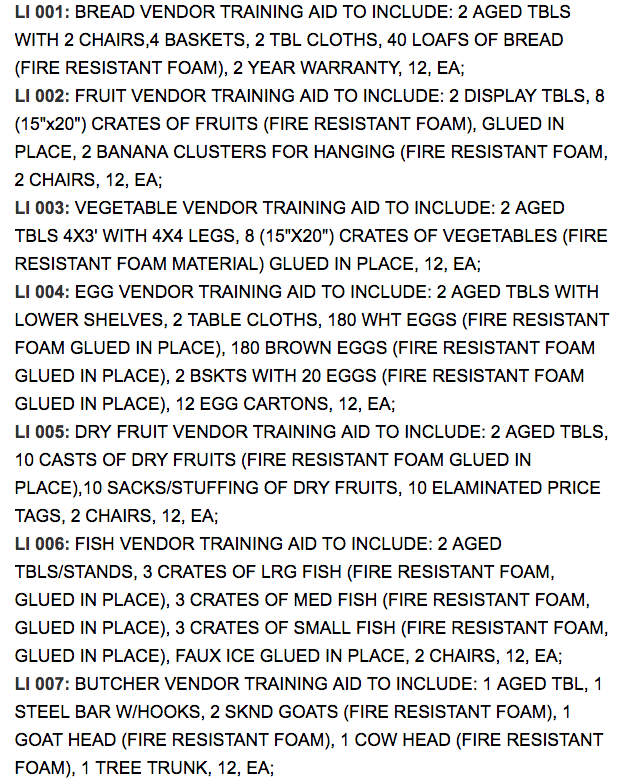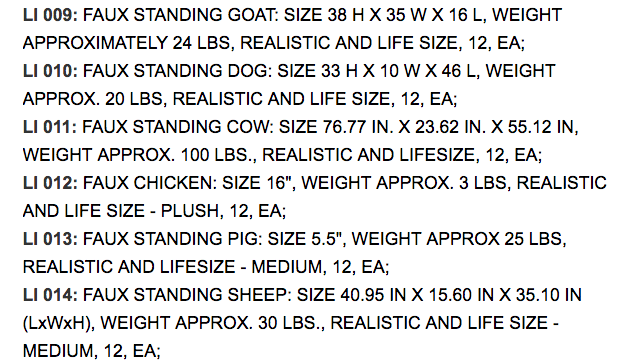
Training is the key to winning battles, the U.S. military believes, and the more realistic, the better.
“The more you sweat in training, the less you bleed in combat,” Richard Marcinko, the first commander of SEAL Team 6, famously said. That’s why the Army has a whole command dedicated to readying troops to fight, complete with huge faux battlefields in California, Germany and Louisiana. They’ve got Potemkin villages and pseudo city blocks to give soldiers the sense that they’re on real-world missions.
But it all boils down to the details. That’s why the Army is buying flocks of foam animals and foam fruits and veggies. “Atmospherics props are designed to enhance the village concept training in Military Operations in Urban Terrain sites,” the Army’s Fort Knox says of its cadet summer training. “The purpose of this acquisition is to enhance training quality by adding a measure of realism to Mission Command Leadership Exercise operations.”
It’s almost like Old Sergeant MacDonald went to Costco and loaded up the minivan:

Such victuals are common in Afghanistan and Iraq. And just like the ol’ Christmas manger, it’s nice to have some livestock standing around to give a war game that realistic sheen:

The entire herd and all the goods “shall be made of fire retardant foam and will be the size of actual item counterpart,” the Army says. “They will be colored to look like actual item counterpart.”
But war, of course, is not all fun and games. “The contractor shall develop and implement procedures to identify, prevent, and ensure delivery serviceable items,” the service warns. “The contractor shall be held liable for any unserviceable or defective items received.” That’s because, for want of a foam goat’s head, the battle could be lost.
More Must-Reads from TIME
- Your Vote Is Safe
- The Best Inventions of 2024
- How the Electoral College Actually Works
- Robert Zemeckis Just Wants to Move You
- Column: Fear and Hoping in Ohio
- How to Break 8 Toxic Communication Habits
- Why Vinegar Is So Good for You
- Meet TIME's Newest Class of Next Generation Leaders
Contact us at letters@time.com